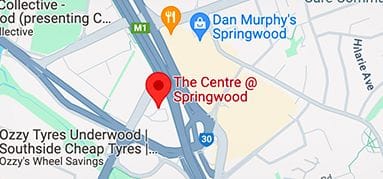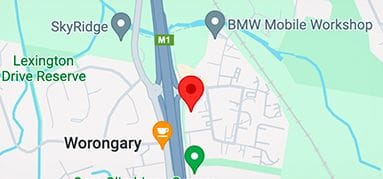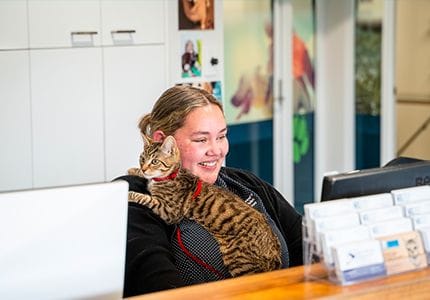Discharge notes to give your clients.
CLIENT INFORMATION
Oesophagostomy Discharge Notes
PART 1: ABOUT THESE DISCHARGE INSTRUCTIONS
a) About the QR code videos at the end of the notes: The first video demonstrates how to flush the tube with water (5-10mls is recommended at the start and end of each feed), how to administer food down the tube and how to check the tube exit site and clean this. The second video explains how to blenderise food with an example.
b) What to send home with the client in addition to the discharge notes: Send the clients home with the food you have chosen and the first lots of neck bandaging, if there is a neck bandage (as opposed to a commercial kitty collar). Also send owners home with some saline and swabs to clean the exit site.
c) Calculations. There are parts of the discharge instructions that need to be filled in. These are marked with a bold X.
These calculations below help to fill these X’s in.
1 - Calculate how many kcals patient needs daily using one of the following; If >2kg daily RER(kcal) is 30 x weight + 70. kcal If <2kg daily RER(kcal) is 70(body weight)0.75kcal
2 - Calculate how many mls the patient needs daily. mls required = RER (above) in kcal / blend kcal/ml (below for various blends)
EXAMPLE calculation: 10kg dog. RER 30x10 + 70 = 370kcal. For hills i/d blend this would be 370kcal divided by 0.5kcal/ml = 740mls per 24 hour period.
Here are some examples of blends that can be made and the kcal/ml that results.
DOGS:
- Hills i/d Blend 1 can of i/d with 60mls of water. This blend is 0.9kcal/ml or (for more watery) Blend 1 can of i/d with 200mls of water. This blend is 0.67kcal/ml
- Hills i/d low fat Blend 1 can of i/d low fat with 60mls of water. This blend is 0.75kcal/ml or (for more watery) Blend 1 can of i/d low fat with 200mls of water and blend is 0.5kcal/ml
- Emeraid Mix 2 parts water to 2 parts Emeraid and makes This blend is 1.69kcal/ml
- a/d or RC recovery/ensure Blend 1 tin a/d OR Royal Canin recovery with 80mls ensure and 20mls water. This blend is 1kcal/ml
- Royal Canin GI low fat Mix 1 can with 60mls. This blend is 0.81kcal/ml or (for more watery) Mix 1 can with 200 mls. This blend is 0.63kcal/ml
- Royal Canin Sensitivity Mix 1 pouch (85grams) with 10mls water. This blend is 1.09kcal/ml
- Emeraid intensive care Mix 1.5 scoops powder with 2 scoops water. This blend is 1.65kcal/ml
- Emeraid Sustain Mix 2 scoops power with 2 scoops water. This blend is 1.84kcal/ml
- Royal Canin Recovery or Hills a/d + Ensure + water Mix 1 tin recovery or a/d with 80mls ensure + 20 mls water. This blend is 1.1kcal/ml
3. Enter the total 24 hour period water intake where marked with an X below (50mls/kg).
PART 2: THE DISCHARGE NOTES. Please feel free to copy and paste to make your own.
Oesophageal Feeding Discharge Instructions
An oesophagostomy tube is a tube that enters into the oesophagus through the skin on the neck, and allows us to give food via syringe, without having to force eating. It is a temporary tube, and can be removed by us easily when it is no longer required. The tube is secured to the neck by a finger trap suture. If this suture appears to have come loose from the skin, or the tube appears to be in or out further than usual or has come out completely, please secure the tube in the neck bandage and return to the clinic straight away to have it assessed. DO NOT continue to feed via the tube if you have any concerns. The bandage around the tube needs to be changed every few days, although it is good to check daily for any discharge or concerns with the tube entry site. The bandage consists of a non-stick dressing (such as a make-up remover pad, or interpose dressing) around the tube entry site, and then light bandaging around the neck. To use the feeding tube (this information is also in the below demonstration videos that can be accessed via QR codes): The tube should only be used while your pet is awake. Your pet should be awake and sitting or standing upright if you are putting any food, water, or medication down the tube so that they can swallow. Have everything you need nearby and ready to go. Water should be at normal tap temperature. Any food being fed can be room temperature. Avoid giving hot foods via the tube. If warming food up, DO NOT use a microwave; we recommend placing the syringe of food in a warm water bath to bring the temperature up. Remove the cap from the feeding tube. Attach an empty syringe and draw back. Pull back on the syringe, and then release the plunger. You may get 1 or 2 mL of fluid, but otherwise you should get negative pressure (ie when you pull back on the syringe and let go the plunger should sink back down). If you do not get negative pressure please call the clinic. Flush some water down the tube. Use around 5-10mls or for a large dog use 20mL of tap water. You may notice your pet swallow as you administer water via the tube. If there is any gagging or coughing please stop and call the clinic. If the water is tolerated well, you can then give the food and/or medications. Any food must be blenderised to a very fine consistency (you should be able to suck it up into the syringe) and any medication must be crushed into a fine powder or be a liquid form. Capsule medications may be opened and the powder from the caspule mixed with food or water. The required volume of food should be given slowly over 20 minutes to avoid a large volume of food suddenly in the stomach. After administering any food or medication the tube must be flushed again. Flush with 5-10 mls of water or 20mls of water for a large dog, or more if you can still feel any resistance. The cap can then be put back on the tube and the tube tucked into the bandage. Feeding several smaller meals a day will be better tolerated than 2 large meals. The volume required to achieve the sufficient calorie intake is often quite high as the food is very watery.
Feeding regime:
Please blenderise 1 tin of X with XmL water. If the food is not watery enough you can add more water or ensure to make it a consistency that can be drawn through a syringe. The second video demonstrates how to do this, but may use a different food to your calculated feeding plan, so use the combination recommended in these notes, and not the video. The daily required amount will be approximately X mL per day of this solution. Divide this into 6 feeds of x/6 = or x/4 = If your pet is eating well voluntarily they do not need to be tube fed. In this case just flush the tube twice a day with water. If your pet is eating moderately well but not enough, you can give half the amount via feeding tube. If your pet is not eating at all, please feed as above.
We often find animals who have been a bit off their food over time may not tolerate large volumes all at once. Therefore, increase over 3 days, and on day 1 give 1/3 the recommended volume, on day 2 give 2/3 the recommended volume, and on day 3 give the full recommended volume. This may have already been performed in hospital, so check with us if this is unclear. In the syringes this looks like an enormous amount, but remember 20mL is only a tablespoon and 125mL is only 1/2 a cup, so it is usually tolerated quite well.
Water:
If your pet is not drinking water by mouth, in addition to the liquidy food, you can flush around 50mls/kg down the tube per 24 hour period. X (50mls x body weight) is the total water per 24 hours. Subtract any water you use for tube flushes from this total amount. Divide the total 24 hourly water amount into the number of feeds per day, so the total amount of water is given in smaller amounts.
Neck Bandage:
We have provided some material to change the bandage, or a re-usable neck collar. Change the bandaging when it is soiled (around every 2-3 days) but check the wound daily. If there is redness or discharge around the wound where the tube exits the skin, let us know. It can be cleaned with cotton wool and saline. Please don't hesitate to call us if you have ANY questions or concerns.
VIDEO: Oesophagostomy tube feeding
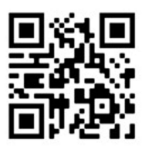
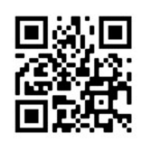
&geometry(278x56))
